Submitted by WA Contents
First 3D-printed House in the Czech Republic is almost complete
Czech Republic Architecture News - Jul 02, 2020 - 13:19 7710 views
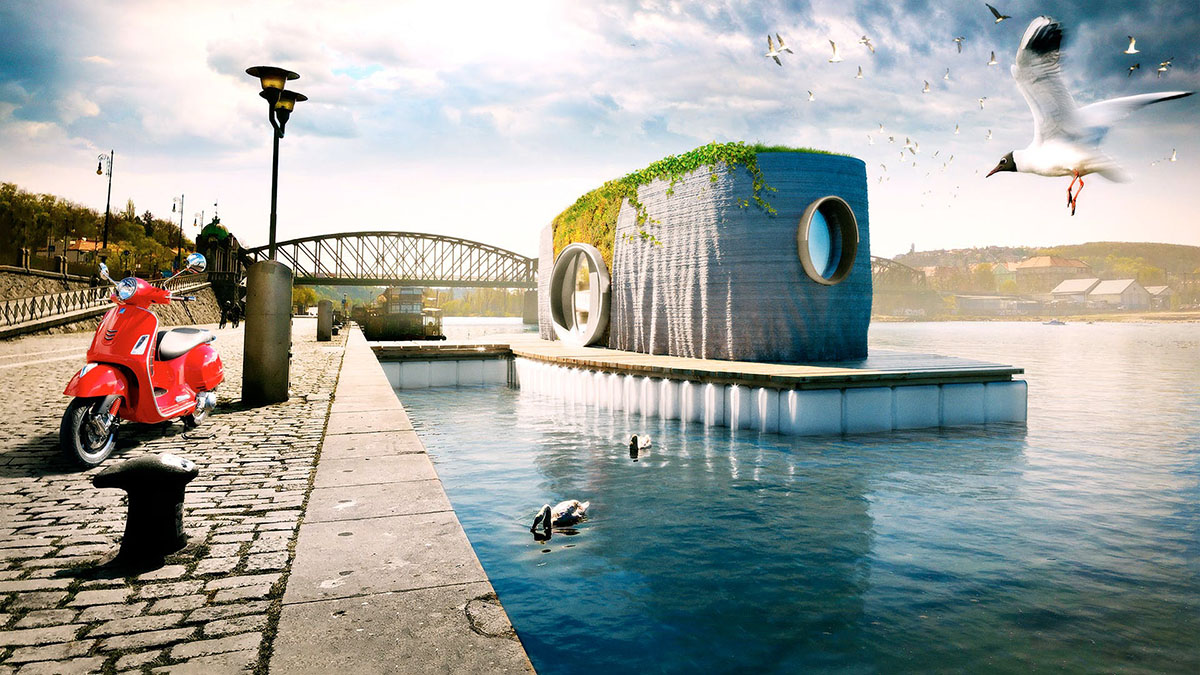
A new 3D-printed house, developed by building society Stavebni sporitelna Ceske sporitelny and sculptor Michal Trpak, has been built by using 3D printing technology in the Czech Republic.
First plans were announced on May 25 and the team have completed the house, called Prvok (Protozoon), in České Budějovice. The house was designed partially self-sufficient and suitable for the country, which can be used in the city or on water.
It was printed in 22 hours, including its partitions, and used a total of 17 tons of concrete mixture. The house will now go through different tests for its performance and durability.
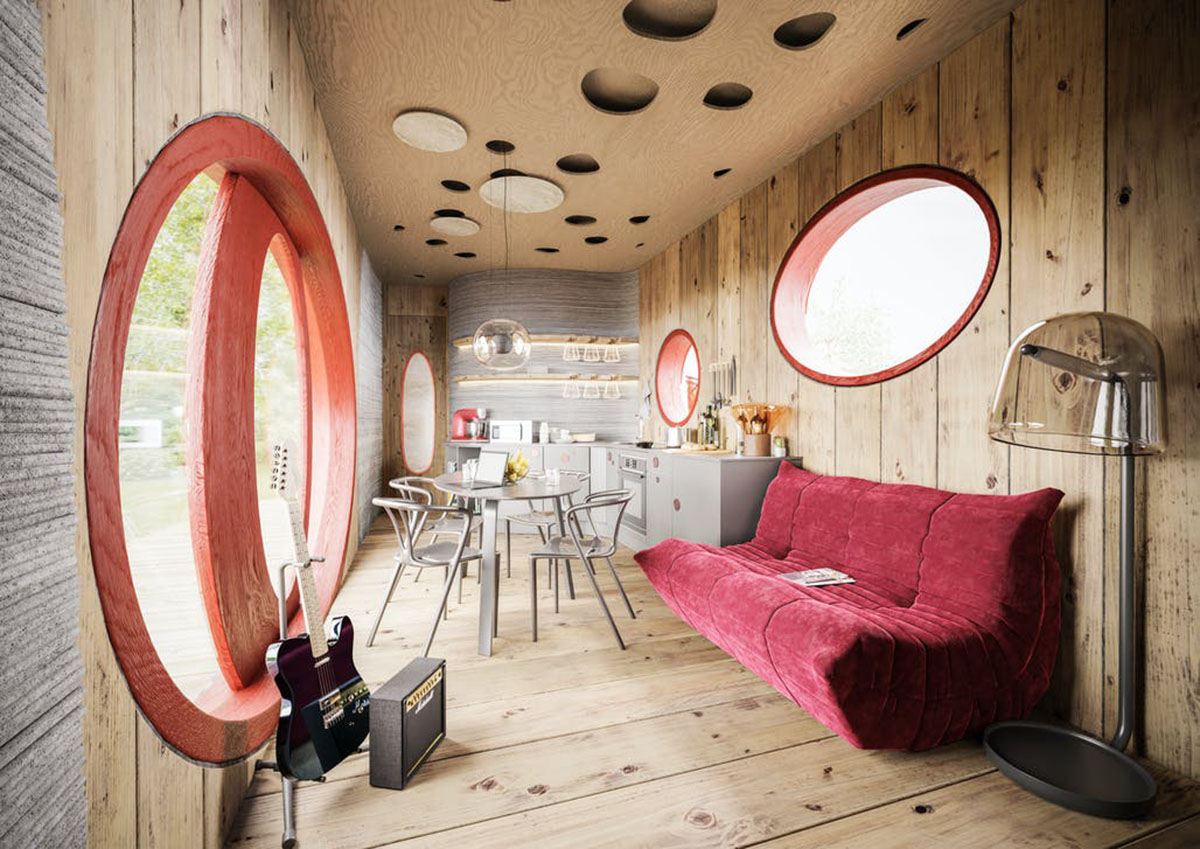
Image courtesy of Scoolpt
"Compared to conventional passive houses, printed houses can save up to 50% of all costs and are built seven times faster. Compared to brick buildings, 3D printing also generates up to 20% fewer CO2 emissions," stated in press release.
"The Prvok house was printed using a robotic arm through which the special material flows directly to the destination. The robot prints at a speed of 15 centimeters per second."
"The robot itself is a Czech innovation from the workshop of Trpak's other initiative Scoolpt. A young architect and programmer Jiri Vele programmed an automotive robot for 3D printing concrete."
"Scoolpt, in collaboration with Master Builders Solutions (BASF), developed a new concrete mixture for printing that is enriched with nano-polypropylene fibers, plasticizers that improve plasticity and produce better organic shapes, and a setting accelerator," added a statement.

Rendering. Image courtesy of Prvok (Protozoon)
As the team highlights, this type of concrete hardens after 24 hours to standard firmness of the foundations of a classic family house (i.e. 25 MPa). After total hardening in 28 days, the concrete acquires the values (65 MPa) – the same as in bridges.
"Scoolpt, in collaboration with Master Builders Solutions (BASF), developed a new concrete mixture for printing that is enriched with nano-polypropylene fibers, plasticizers that improve plasticity and produce better organic shapes, and a setting accelerator."
"This type of concrete hardens after 24 hours to standard firmness of the foundations of a classic family house (i.e. 25 MPa). After total hardening in 28 days, the concrete acquires the values (65 MPa) – the same as in bridges."
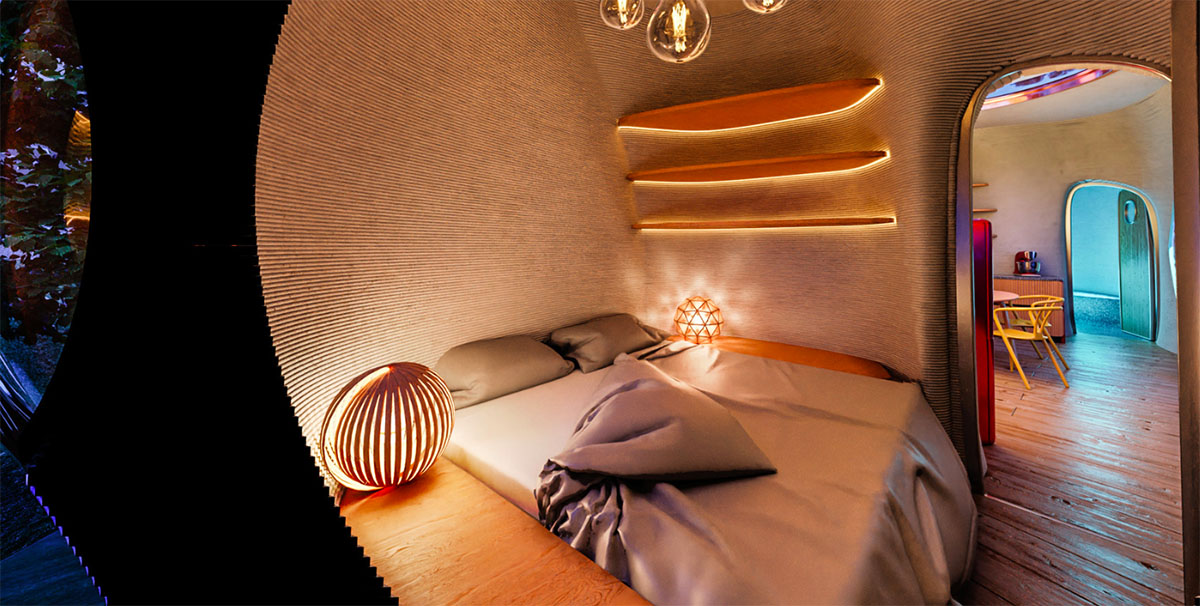
Image courtesy of Scoolpt
The first printed house covers a 43-square-metre area will be built in the Czech Republic. The structural works took only two days and the completion will two months.
The house has three rooms – a bathroom with toilet, living room with a kitchen and a bedroom. The building will be anchored on a pontoon and it is yearround livable house.
The house offers eco technologies such as recuperation, recirculation shower, remote control, green roof, as well as reservoirs for drinking, utility and sewage water.
The house is designed to last at least a hundred years in any environment. "In the future, the owners can crush the building once it has run its useful life, and print it again with the same material directly on the location," said Michal Trpak.
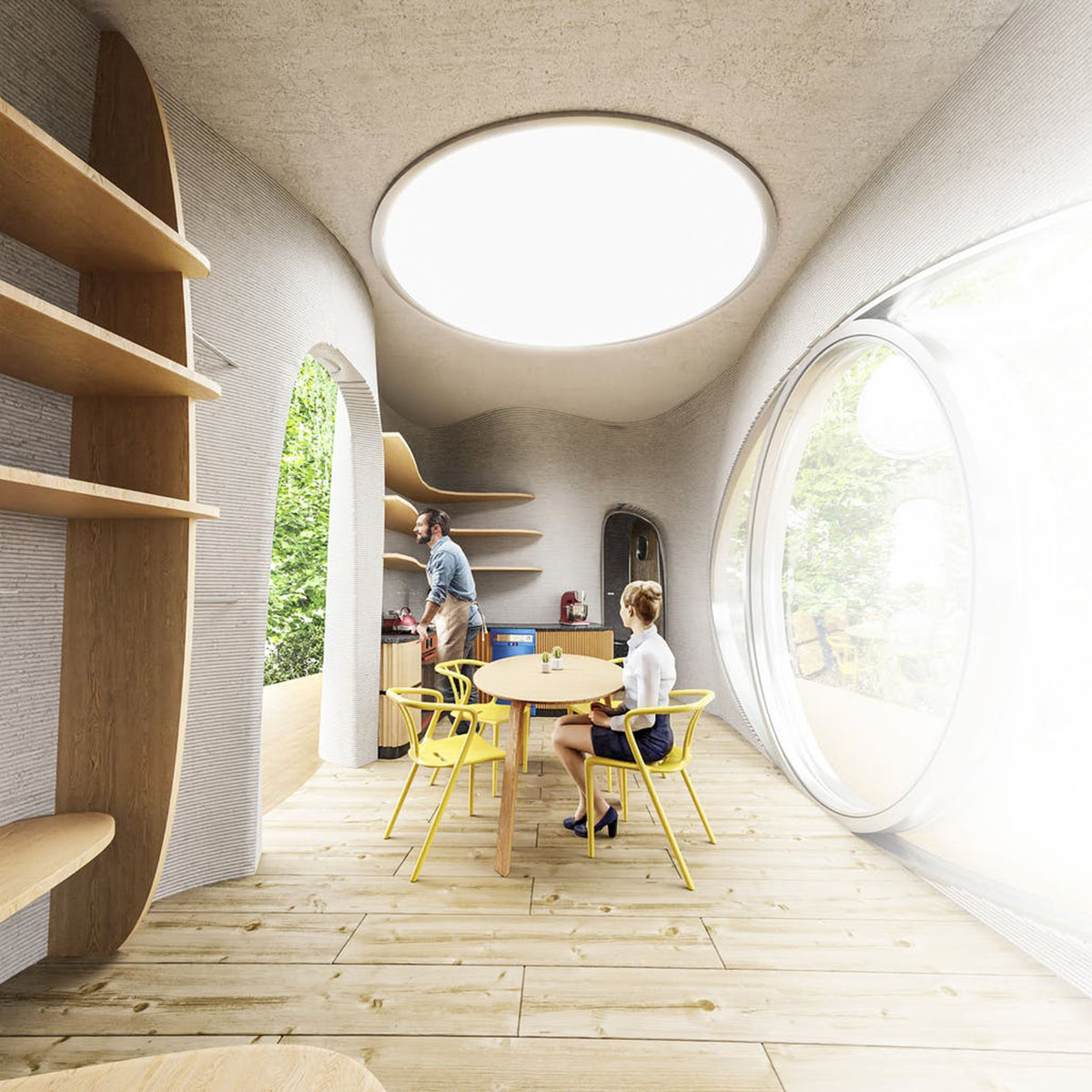
Image courtesy of Prvok (Protozoon)
Less waste and lower costs in European construction business
The calculations of the project sponsor, building society Stavebni sporitelna Ceske spořitelny (Buřinka), show that a printed house will be built seven times faster than a conventional brick house.
It will create several times less construction and demolition waste which now accounts for 46% of total waste production in the Czech Republic and similarly in Europe.
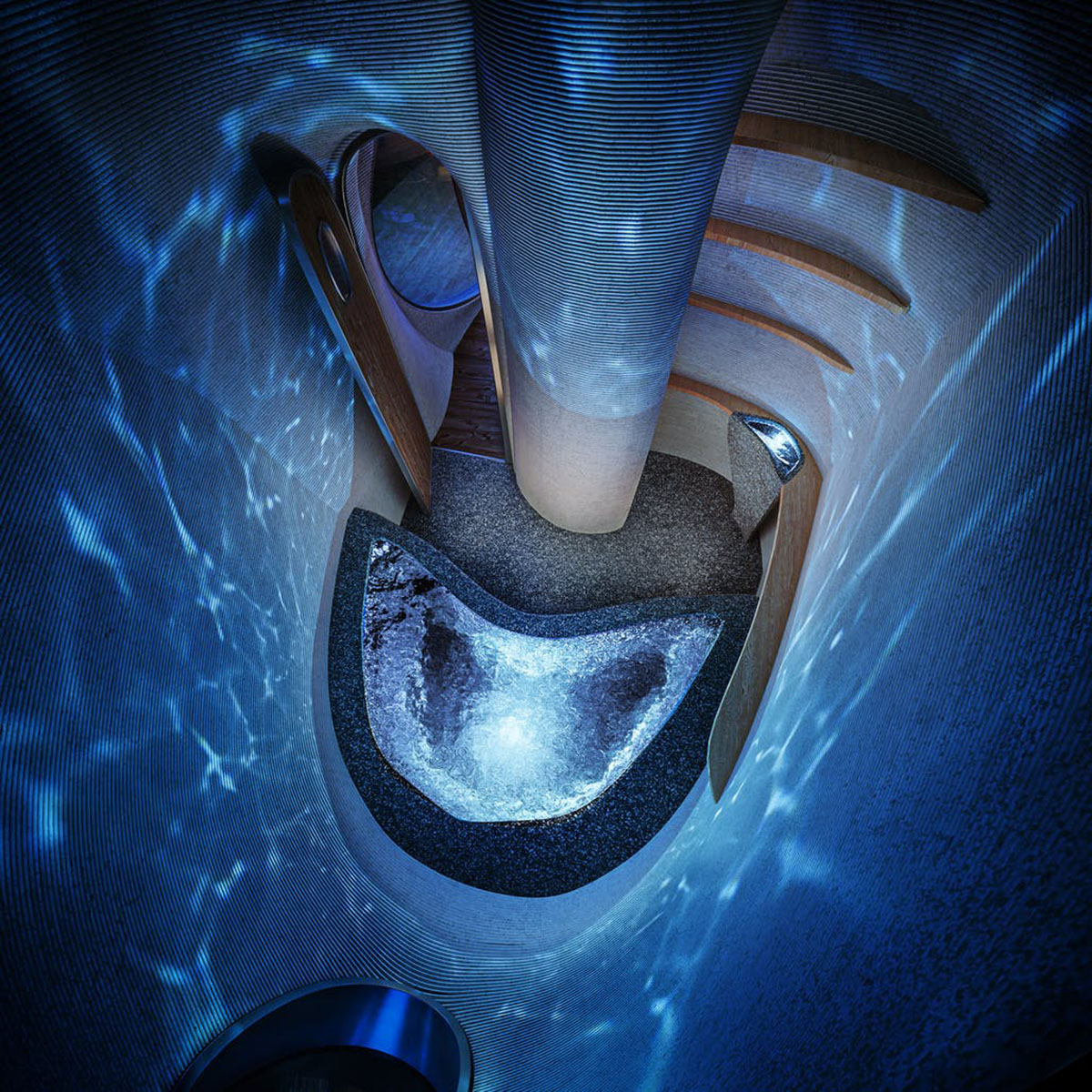
Image courtesy of Prvok (Protozoon)
"Compared to conventional brick buildings, 3D printing also generates up to 20% fewer CO2 emissions, which the European Union aims to cut by 30% by 2030 (compared to 2005). It requires only about 25 workers to print one house (forty less than usual). The prices in serial production can hit a half of the cost of a conventional passive house. The self-sufficiency delivers further operating cost savings," said Libor Vosicky, CEO of Burinka.
According to analysts at building society Stavebni sporitelna Ceske sporitelny – Burinka (member of Erste Group), buildings and construction sector all over the Europe faces numerous challenges.
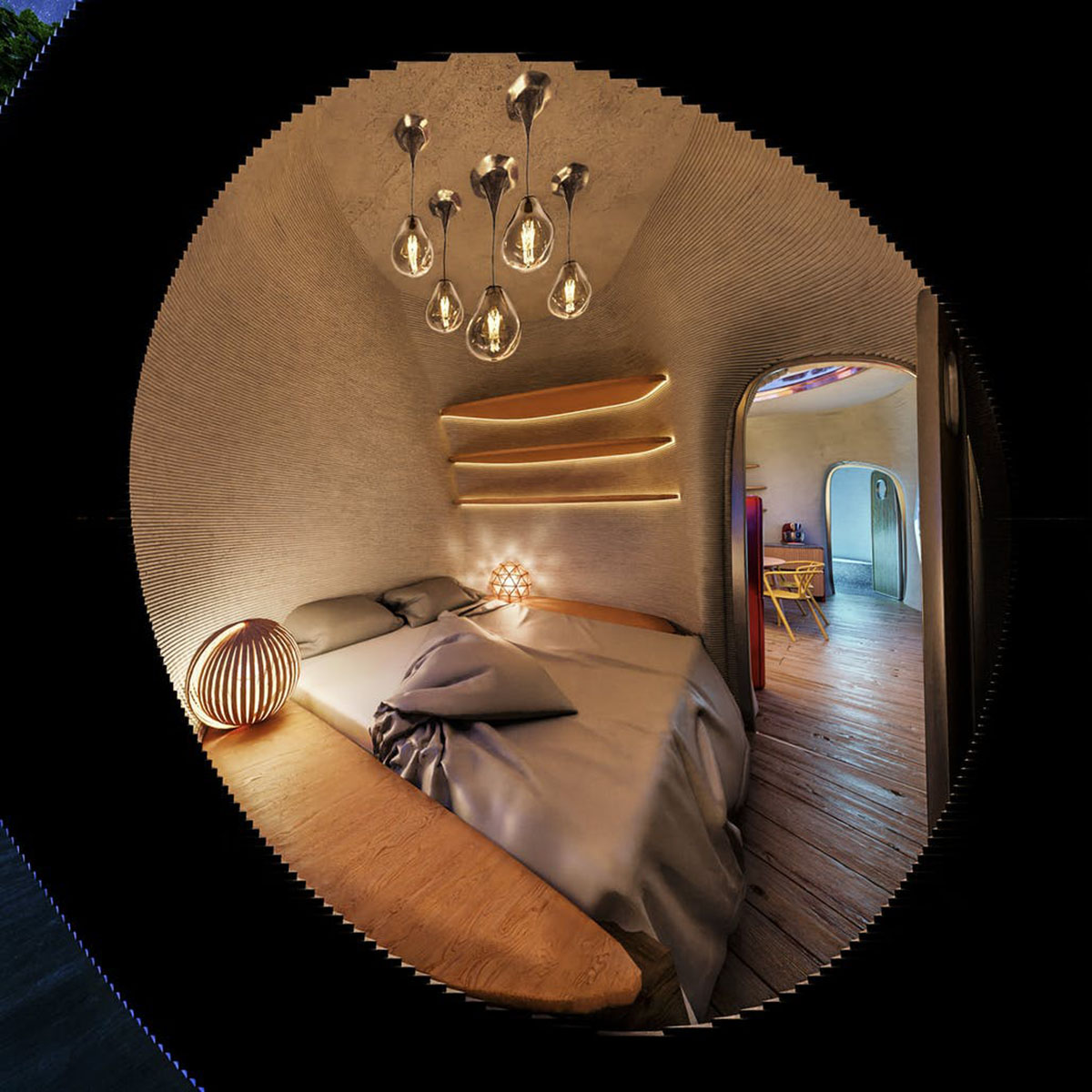
Image courtesy of Prvok (Protozoon)
"In the Czech Republic, the number of skilled employees in construction has decreased by 10% in ten years, while the number of construction contracts has increased by 45% in the same period. 3D printing can start the automation of construction production all over the Europe, reintroduce the possibility of customization and aesthetics into residential construction, as had been the case in the past," concluded Vosicky in a statement.
Top image courtesy of Prvok (Protozoon)
> via Prvok (Protozoon)
